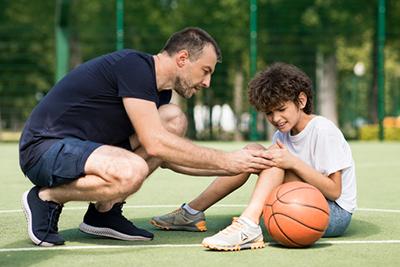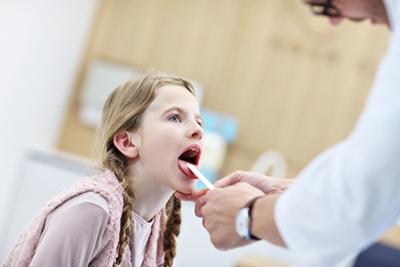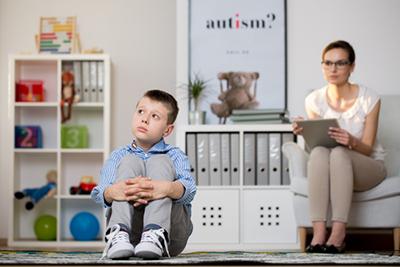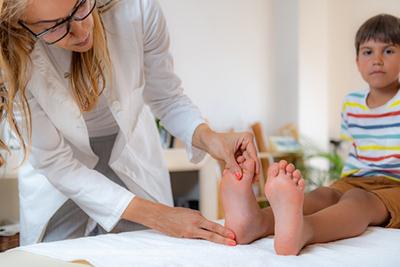Common Concerns Addressed in Prenatal Visits
- posted: Jan. 11, 2024
When you find out that you are pregnant it's easy to get carried away and start making a million plans. But before you get too carried away an important first Read More
The Role of the Pediatrician in Sports Physicals
- posted: Jan. 09, 2024
When your child decides that they want to participate in sports, most schools will require them to undergo a sports physical. This helps ensure that your child is healthy and Read More
Best Ways To Prevent Ear Infections
- posted: Jan. 07, 2024
Ear infections are common in children because their ears are not fully developed, and it can be difficult to properly drain fluid. Ear infections can be brutal, and it can Read More
The Importance of Regular Pediatric Visits
- posted: Jan. 05, 2024
A pediatric visit at Southwest Children's Clinic is a comprehensive healthcare appointment tailored to meet your child's needs. During these visits, skilled pediatricians conduct thorough physical examinations, address developmental milestones, Read More
The Role of Pediatricians in Early Childhood Development
- posted: Jan. 01, 2024
Monitoring your child’s development is an important part of what a pediatrician does. It’s important to visit your pediatrician, because child development is a complex area and needs the expertise Read More
What Sports Physicals Can Tell You About Your Child's Overall Health
- posted: Dec. 11, 2023
Sports physicals are comprehensive medical exams assessing your child's overall health and fitness before engaging in organized sports activities. These exams ensure that your child is physically prepared for the Read More
Promoting Mental Health in Children
- posted: Dec. 07, 2023
You want your child to be healthy, and an important part of good health is great mental health. Promoting mental health in your child is one of the most important Read More
Tips To Help Your Child Eat Healthier
- posted: Dec. 01, 2023
Caring for your child involves many decisions each day. One of the most important things that you can do is ensure that they’re getting the right nutrition and that they’re Read More
Sports Injuries in Kids: Prevention and Treatment
- posted: Nov. 07, 2023
Child sports injuries refer to physical harm in children while participating in sports and recreational activities. They can range from minor bruises to painful conditions, affecting muscles, bones, and joints. Read More
The Importance of Well Care Visits for Adolescents
- posted: Nov. 01, 2023
Find out why visiting the pediatrician is just as important for teens. We all know just how important it is to bring newborns and children to the pediatrician’s regularly, but we Read More
Common Childhood Illnesses: Prevention, Treatment, and When To See the Pediatrician
- posted: Oct. 29, 2023
Our team at Southwest Children’s Clinic – your pediatrician in West Jordan, UT – is here to help keep your kids healthy and thriving. Common Childhood Illnesses: Treatment and Prevention Children can Read More
The Role of Pediatricians in Mental Health Support for Children
- posted: Oct. 27, 2023
Concerned your child might be struggling with mental health issues? Southwest Children’s Clinic – your pediatrician in West Jordan, UT – can be an invaluable resource. Learn how below. How Your Read More
Asthma Prevention: A Pediatrician's Guide to Respiratory Health
- posted: Oct. 13, 2023
An asthma attack can be scary, especially if it happens to your child. There are some steps you can take to help prevent an asthma attack. Our pediatrician can tell Read More
The Benefits of Children Wellness Checkups
- posted: Oct. 11, 2023
One of the most important parts of taking care of your child is ensuring that you’re doing everything you can to keep them healthy. The best way to do this Read More
When Should I Have My Child Screened for Autism?
- posted: Oct. 09, 2023
It’s important to remember that all children develop at different speeds. Sometimes, these developmental delays may be due to an issue that your child is dealing with. If you notice Read More
Why Is A Sports Physical So Important?
- posted: Oct. 01, 2023
When your child wants to participate in their favorite sports, it’s important that you’re doing all that you can to keep them protected. Not only do they need all of Read More

















